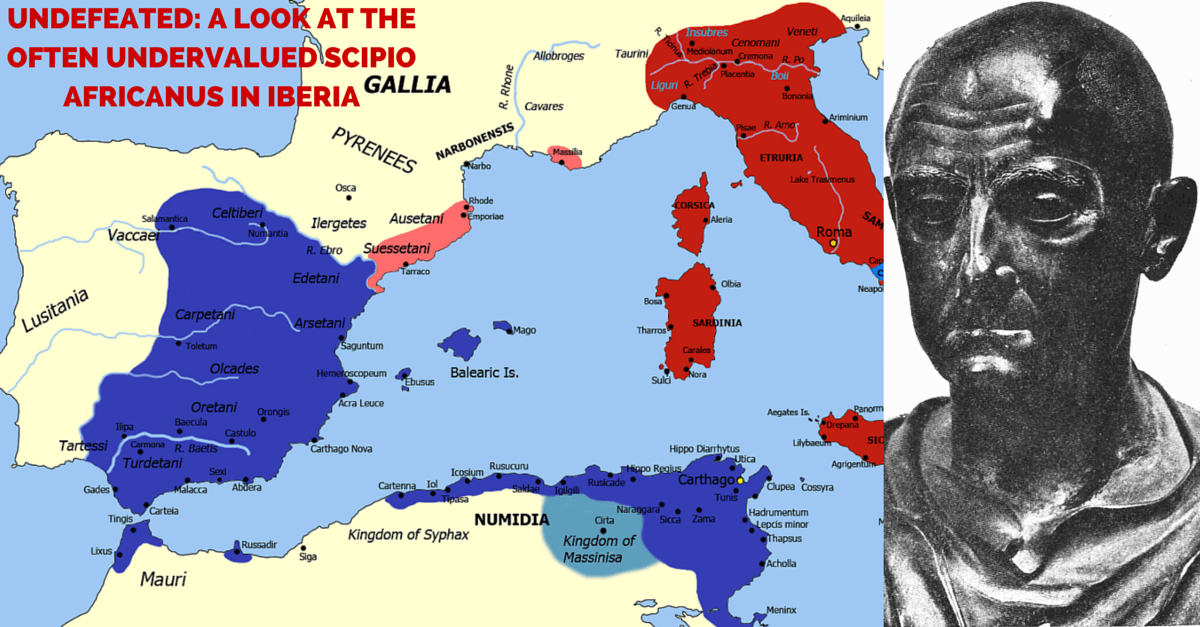Almost every armchair historian and even most professionals have their own list of favorite or best generals. There are names that often appear, such as the scrappy George Washington, the brilliant Alexander and Erwin Rommel. In ancient military history Hannibal Barca is often placed on a higher pedestal than the man who actually defeated him, Publius Cornelius Scipio. In fact on an open voting and ranking website Thetoptens.com, Hannibal holds a lofty #4 ranking while Scipio can be found in other receiving votes all the way down at #34 at the time of this writing. Not only was Scipio the only general to defeat the great Hannibal, he campaigned for over a decade without suffering a defeat and utilized tactics arguably superior to Hannibal’s in multiple battles fought in hostile territory.
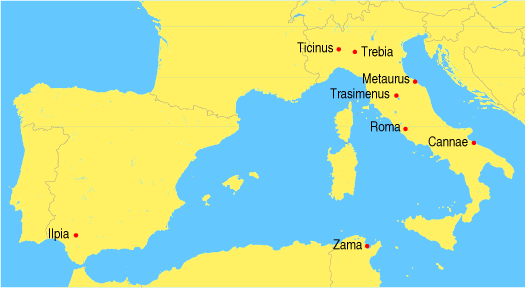
Scipio has an exciting first mention in the history books; in the first engagement between the Romans and Hannibal, the 18 year old Scipio rode in to rescue his father who had been surrounded by a large force of Numidian cavalry. Scipio actually won the Civic Crown for his actions, one of the highest honors possible in Rome. Scipio was not nearly old enough to lead an army but he served as an officer for the crushing defeats of Trebia and Cannae, and may have been one of the few survivors of Trasimene. After Cannae Scipio rocketed up the ranks despite his age as he was known and respected for his bravery and experience through the battles so far and his unwavering patriotism was welcomed in a time when the Roman world was falling apart.
Scipio was elected to lead Roman forces in Iberia, replacing his father and uncle who had been killed after their Iberian mercenaries defected and annihilated the Roman army there. Scipio took over in northeastern Iberia and quickly marched down to take the chief city of Iberia, New Carthage (modern Cartagena).
Though Scipio’s army greatly outnumbered the garrison, the city was surrounded by the sea and a lagoon on three sides and initial land assaults were easily repulsed. Doing some scouting, Scipio discovered that the lagoon could be crossed at certain points and set a small force to scale the lagoon walls while the majority of the army kept the focus on the land gates and the city fell within hours. Scipio led his troops, not recklessly from the front, but near the front lines, urging his men forward and personally acknowledging accomplishments after the battle.
At New Carthage Scipio showed a talent for strategic and tactical command. The city was a major supply depot for Carthaginian Iberia and its capture sent a huge message to the Iberian tribes. In his first major command Scipio ran into a wall and was able to take a step back and find a solution that turned a tough battle into an easy victory. Not only the victory was remarkable either, Scipio marched hundreds of miles through hostile territory, misdirecting the Carthaginian armies in the area to be able to catch the city scarcely defended, a move almost as bold as Hannibal’s Alpine crossing.
After New Carthage Scipio spent the winter training his army into exactly the type of force he wanted. 5 Kilometer runs in full armor were regular occurrences. It is during this training period where Scipio is thought to have reorganized his army to implement small unit tactics and the adoption or adaption of the falcata sword.
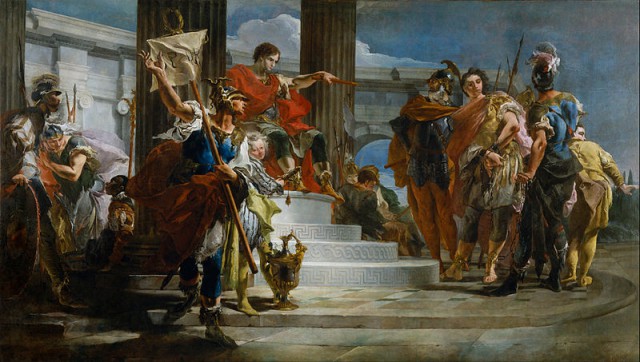
Three Carthaginian armies were in Iberia but were separated to maintain order in the often rebellious regions of Iberia. Scipio targeted Hannibal’s brother, Hasdrubal Barca, who had a smaller army. Hasdrubal camped atop a hill near the town of Baecula and fortified, waiting for one of the other two armies to reinforce him. Scipio, in his first field battle, decided to take the initiative while he had the numbers and sent his men to attack up the steep hills. Attacking up a hill, especially one as steep as at Baecula, was almost always a terrible decision, but Scipio’s small unit training allowed small groups of Romans to gain chunks of ground at a time and his skirmishers closed into hand to hand combat to hold the Carthaginian troops on the hill long enough for Scipio to lead a flanking maneuver up, around and down the hill against the defenders and routing them.
This series of small maneuvers that culminated in a sweeping flanking movement was all the more impressive as it was achieved up a hill that had been fortified by rock and earth walls by the defenders. These tactics are quite separate from those used by the majority of Roman commanders at the time, which involved a simple mass push by the heavy infantry.
After Baecula, Scipio had to deal with the remaining armies in Iberia, Hasdrubal ultimately left Iberia to reinforce Hannibal through the Alps. After gaining more troops over the next year the two Carthaginian armies under Hasdrubal Gisgo and Mago Barca sought to expel Scipio from Iberia. The combined army outnumbered Scipio’s by at least 10,000 men. As neither wanted to attack the others more defensible position the two forces marched their armies out into battle array for an hour or two and just returned to camp every day for almost a week.
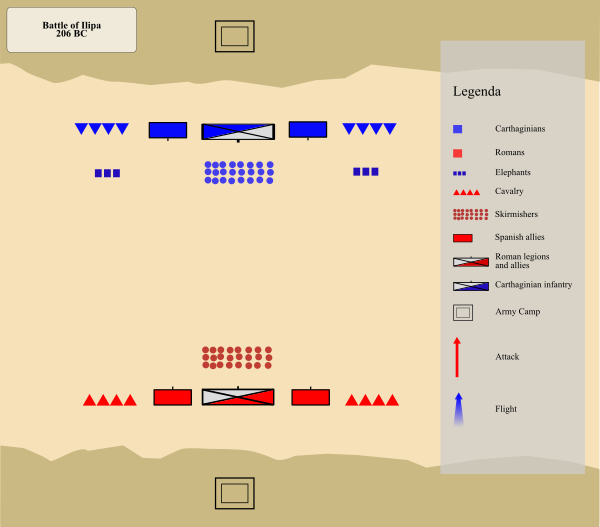
This was common as most generals were fine with waiting to force the other to bring the fight to them. Scipio did just that but he set up his army for success before they even left the camp. Waking early, Scipio marched his army out with his heavy Roman infantry on the flanks and his lighter mercenaries and allies in the center, the opposite formation he had been showing Hasdrubal Gisgo the past few days.
Scipio harassed Hasdrubal’s camp and forced him to march his army out without proper preparations. Hasdrubal saw Scipio’s changed formation and how the Roman flanks would overpower his weaker flanks but had no time to rearrange his whole army as Scipio was on the attack. The Romans did indeed crash into the flanks, but Scipio held back his weaker center. This kept Hasdrubal’s heavy infantry center, originally positioned to counter the Roman infantry, out of the fight. If committed to helping the flanks the Carthaginian center risked being flanked by the unengaged Iberians. If they were too charge the Iberians they would have left their flanks open to the rear lines of the Romans, the most veteran Triarii. As the Romans routed the flanks and fell on the center the Iberians finally engaged and completed the rout.
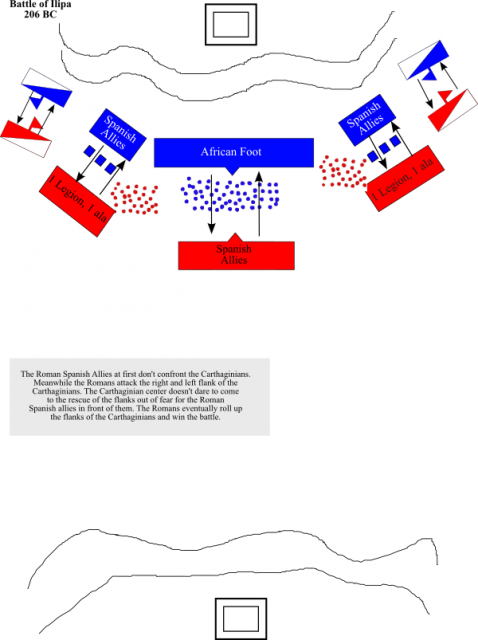
The battle of Ilipa was a masterful victory by Scipio, fought against a larger and more experienced army. It was a sound victory all around and Scipio actually seized the initiative immediately after Ilipa by chasing the enemy. After resting his army just overnight he sent his cavalry out the next morning to slow the enemy enough for his infantry to catch them. The remnants of Hasdrubal and Mago’s army were almost all either killed or captured while the two commanders were able to slip away in the night. The Iberian Peninsula now belonged to Rome, taking away a huge source of income, manpower and a land route to Italy away from Carthage. Next time we will look at Scipio’s Invasion of Africa and his ultimate test against Hannibal.
By William McLaughlin for War History Online
